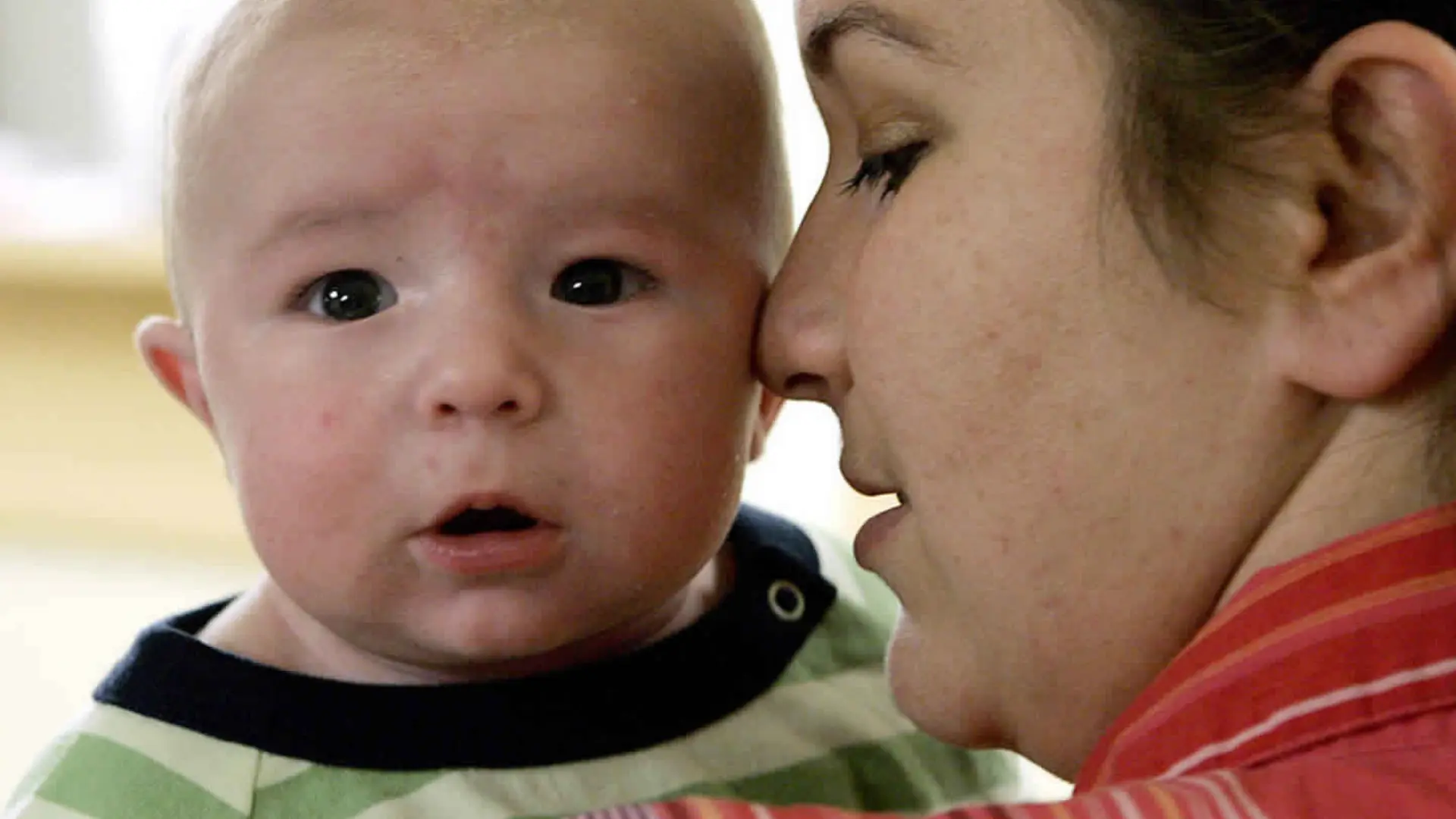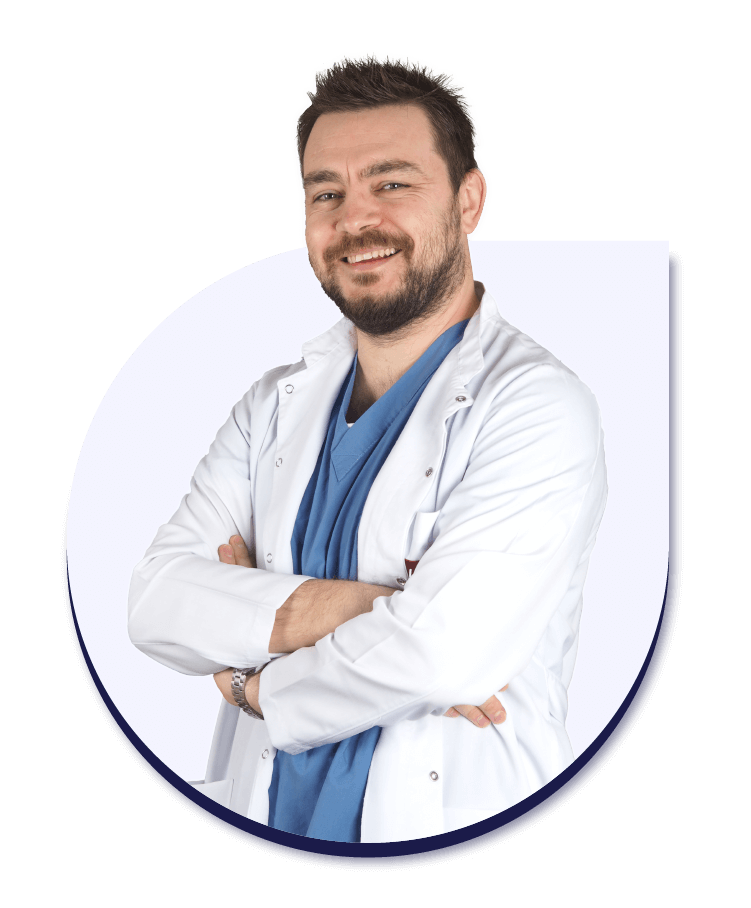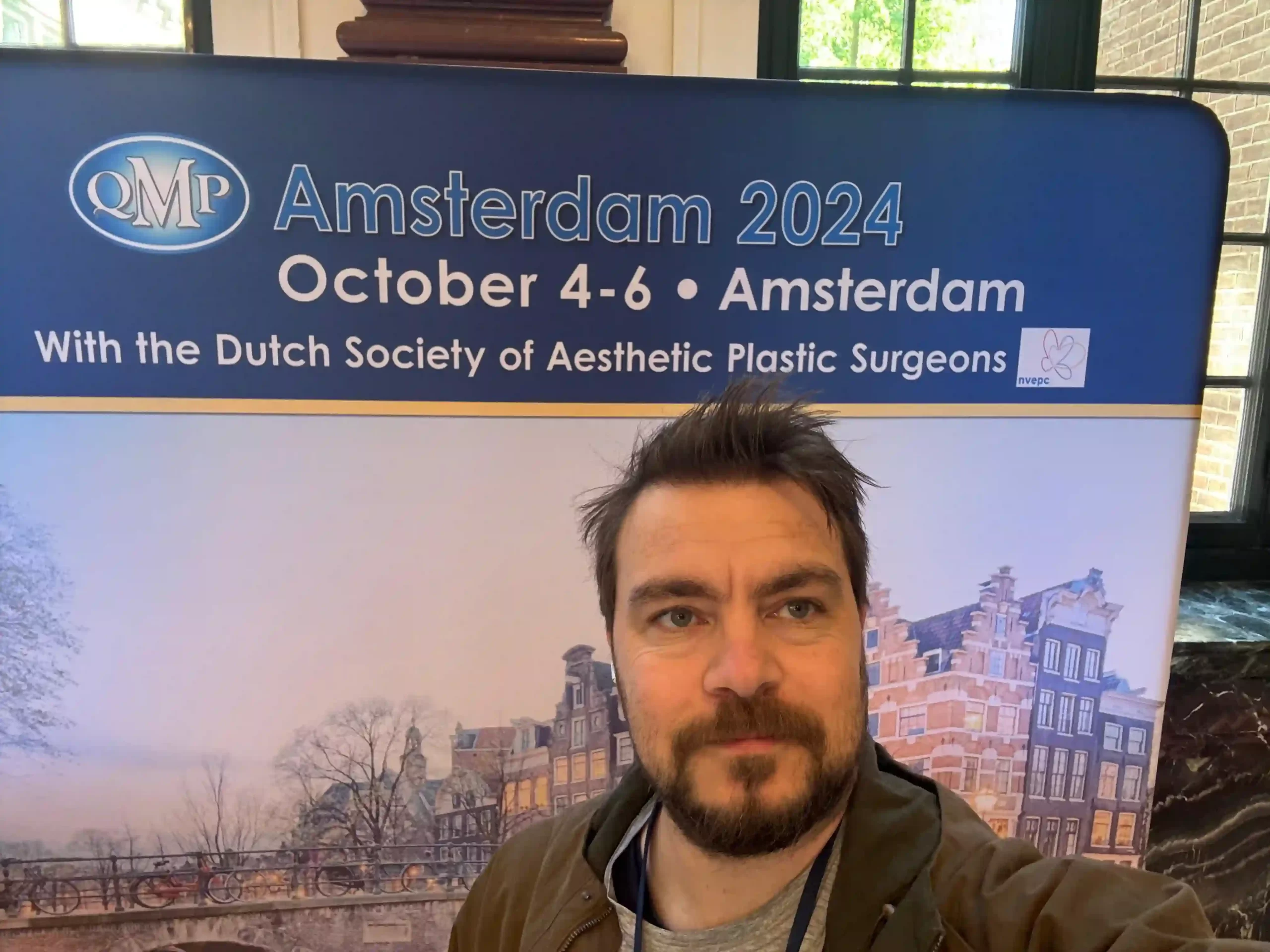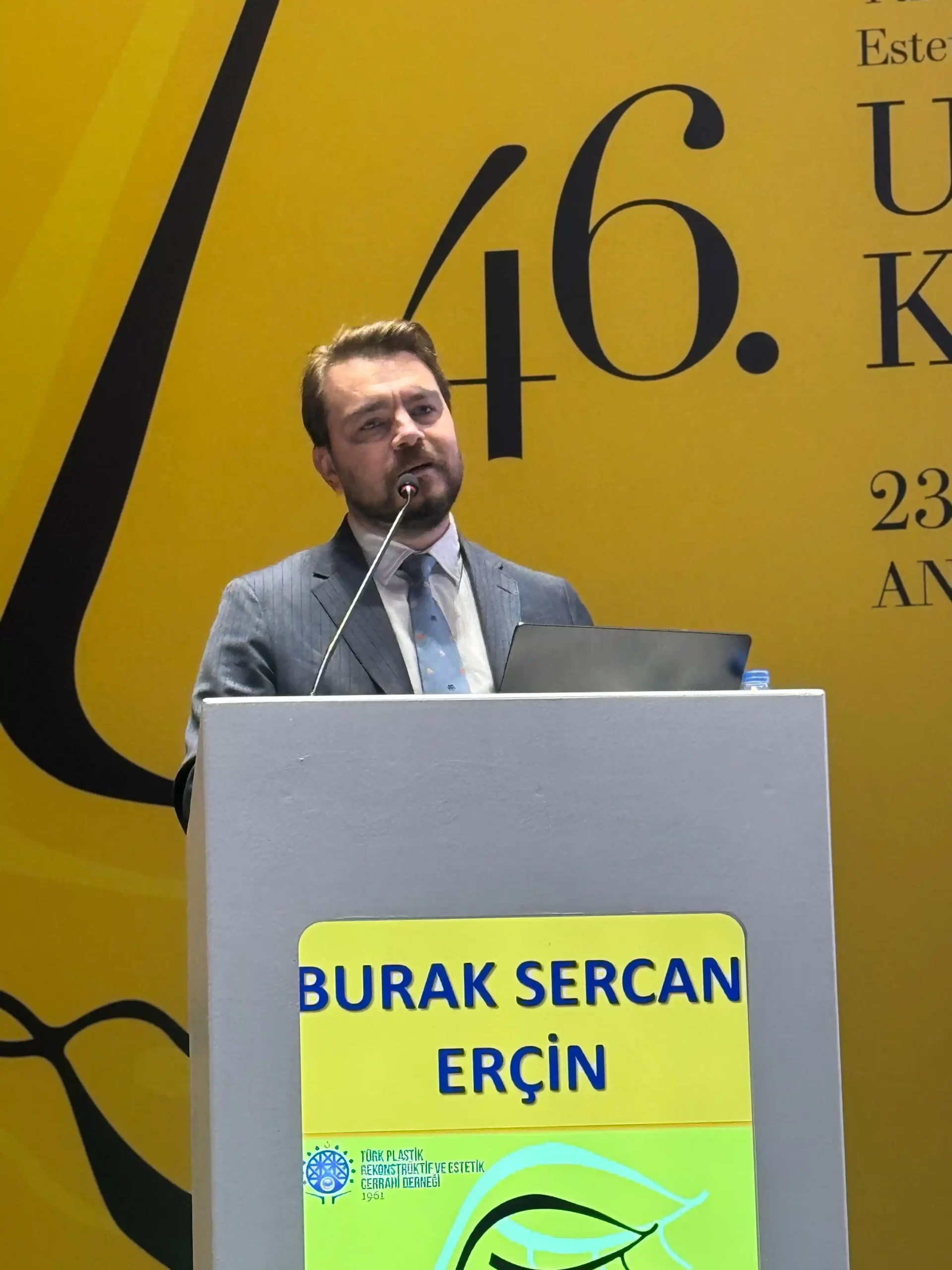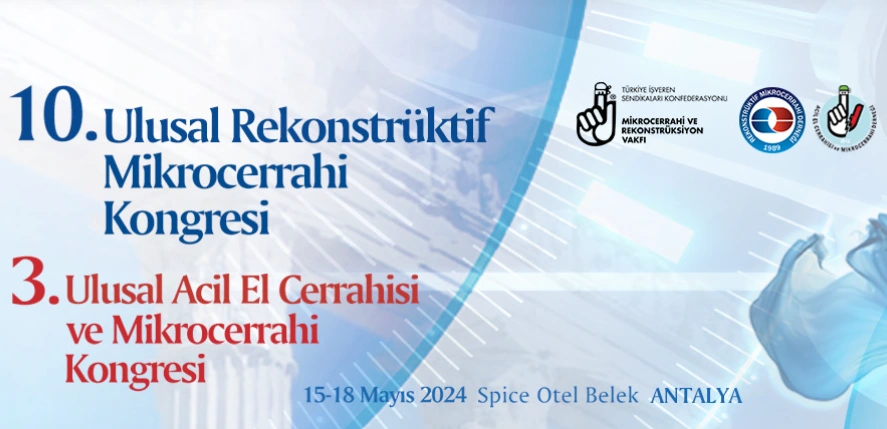Starting on a quest to explore DiGeorge Syndrome means getting into the whole complex of genetics, development, and medical care that forms the lives of the people with it. Accompany us as we explore the intricacies of DII with the help of Dr. Burak. Unravel the complete story of DiGeorge Syndrome with me as to how people are affected and how it is managed.
What is 22q11. 2 Deletion Syndrome?
22q11. 2 deletion syndrome, known as DiGeorge syndrome or velocardiofacial syndrome, is a multi-system genetic disorder with a deletion in a small part of chromosome 22. This loss of functions can result in a variety of signs and diseases that are systemic.
It is one of the most frequent chromosomal deletion syndromes with 1 in 4,000 or so live births, with the exact rates being different in various populations. Clinical presentation of the syndrome may vary greatly among affected individuals, sometimes even within the same family, which makes diagnosis and management difficult.
Typical features of 22q11. 2 deletion syndrome involve congenital heart defects as tetralogy of Fallot and interrupted aortic arch, cleft palate or velopharyngeal insufficiency, facial dysmorphism, immune system dysfunction leading to recurrent infections, developmental delays, learning disabilities, speech and language difficulties, feeding problems and psychiatric disorders as anxiety disorders, attention deficit hyperactivity disorder (ADHD) and schizophrenia.
Additionally, individuals with 22q11. 2 deletion syndrome may suffer from the low levels of calcium, as a result of the underdevelopment or dysfunction of the parathyroid’s glands, which can lead to seizures, and other neurological complications if they are not properly treated.
The syndrome of symptoms that may be associated with the syndrome is rather wide but early diagnosis and intervention greatly improves the outcomes and quality of life in a patient by means of comprehensive medical management and supportive services.
What is the main cause of DiGeorge Syndrome?
The main factor of DiGeorge syndrome is the deletion of part of chromosome 22, and more specifically of the region called 22q11. 2. This deletion is usually a result of a spontaneous event in the formation of reproductive cells or early fetal development and, in most cases, is not inherited from either parent.
Yet, in the certain situations, the deletion may become inherited from person’s parent in who such chromosomal abnormality is also present. The precise ways in which the deletion develops, and its impact on fetal development, are yet to be fully understood, but the research indicates that genetic and environmental factors may be involved.
The deletion affects the normal expression of genes within the deleted region of chromosome 22, which is responsible for the characteristic features and medical conditions of DiGeorge syndrome. Such abnormalities are heart, palate, and facial features, immune system dysfunction, developmental delays and psychiatric disorders, and many more.
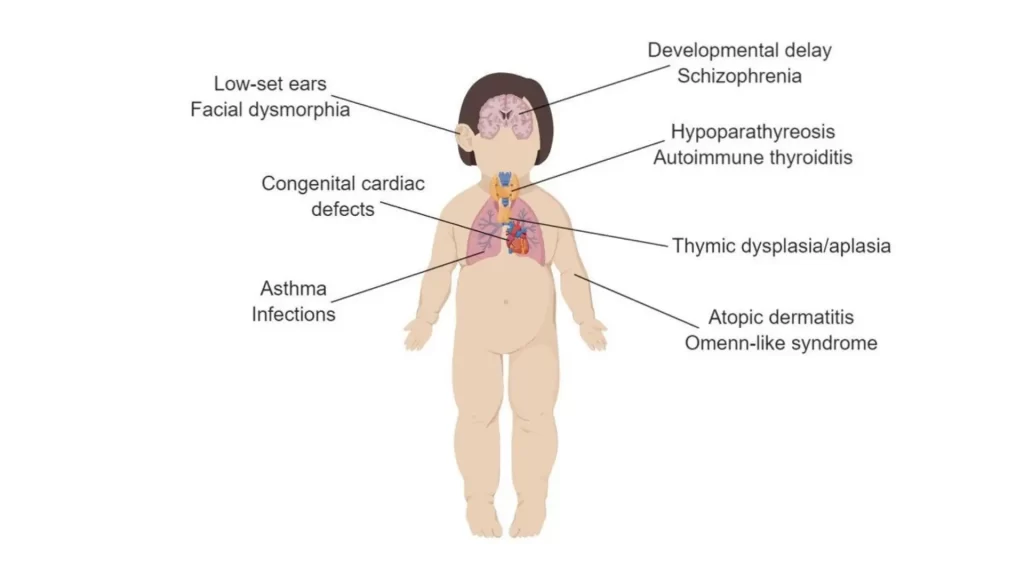
What are the characteristics of DiGeorge Syndrome?
DiGeorge syndrome can be either a syndrome but it is a set of clinical features and a host of medical conditions that affect various systems in the body.
These are congenital heart defects such as tetralogy of Fallot, interrupted aortic arch, or ventricular septal defects, abnormalities of the palate such as cleft palate or velopharyngeal insufficiency, facial dysmorphism including hypertelorism, low-set ears, and micrognathia, immune system dysfunction leading to recurrent infections and autoimmune disorders, developmental delays in motor.
The severity and presentation of symptoms can differ significantly among affected individuals, even under the same roof, and thus, making the diagnosis and management a big challenge.
Early recognition and diagnosis, with proper approach to medical care, cardiac evaluation, immunologic assessment, and developmental support are critical for improving the quality of life of patients suffering from DiGeorge syndrome.
What is deficient in DiGeorge Syndrome?
DiGeorge syndrome patients may have some deficiencies and underdevelopment of some body structures and functions due to the deletion of a segment of chromosome 22.
Thymic hypoplasia or aplasia is one the most important defects associated with the syndrome, which leads to the immune system dysfunction and a high rate of infections. T lymphocytes, which are at the core of the human immune system response against pathogens, depend highly on the thymus for their development and maturation.
Apart from thymic defects, patients with DiGeorge syndrome may also have hypoplasia or dysfunction of the parathyroid glands that play their role in the regulation of blood calcium levels. Low levels of calcium or hypocalcemia can cause seizures, muscle cramps, and other neurological complications when not treated.
Other destructible signs of DiGeorge syndrome are congenital heart defects, irregularities in the palate and facial features, developmental deferrals, and psychiatric disorders, and many others. These deficiencies are usually handled by a comprehensive approach which is directed in addressing individual medical and developmental needs.

Which cells are affected in DiGeorge Syndrome?
The cells most affected in DiGeorge syndrome are those that are derived from the third and fourth pharyngeal pouches during embryonic development. These pouches lead to different structures in the head and neck region such as thymus and parathyroid glands.
The deletion of a portion of chromosome 22 interferes with the proper development of these structures, resulting in their underdevelopment or malfunction. As a result, people with DiGeorge syndrome often have a malfunctioning immune system because of thymic hypoplasia or aplasia and hypocalcemia due to parathyroid gland dysfunction.
Apart from the cells originating from the pharyngeal pouches the deletion will also affect the development and function of other tissues and organs in the body leading to the complex of symptoms and medical conditions characterizing the syndrome. Studies on cellular and molecular bases of DiGeorge syndrome keep revealing its pathogenesis and possible molecular targets for therapy.
Life expectancy of a person with DiGeorge syndrome
The overall survival of patients with DiGeorge syndrome depends on the severity of symptoms, presence of related medical disorders, and the accessibility of proper medical care and support services.
Due to the advent of medical therapies and interventions, such as early detection and treatment of congenital heart defects, immune system dysfunction, and other complications, a high number of DiGeorge syndrome patients can enjoy good quality of life into the adult stages.
Nevertheless, some may suffer from major medical issues throughout their lives which may affect their overall lifespan and the quality of life. Other factors that could affect the lifespan of patients with DiGeorge syndrome include the presence of complex congenital heart defects, recurrent infections, autoimmune disorders, developmental disabilities, and psychiatric disorders among others.
Close observation by health care professionals, a full range of medical services, and supportive services are needed to enable people with DiGeorge Syndrome and their families to have the best results and the highest possible quality of life.
Dr. Burak Reconstructive Surgery Solutions
Dr. Burak Reconstructive Surgery Solutions is an outstanding medical practice that focuses on reconstructive surgery, and it is managed by a reconstructive surgeon with a high level of expertise called Dr. Burak.
The personalized care and advanced surgical techniques offered by Dr. Burak and his team are based on restoring form and function to different body parts ill-affected by congenital anomalies, trauma, or disease. The service provides a full spectrum of reconstructive surgery including facial reconstruction and gender-affirming surgery among others.
The reconstructive surgical solution center, Dr. Burak Reconstructive Surgery Solutions, is committed to offering humane services, cutting-edge surgical procedures, and continuous support to its patients throughout their surgical journey.
The practice maintains a standard of reconstructive surgery and changes the lives of patients around the world, with an emphasis on innovation, excellence, and patient satisfaction.

